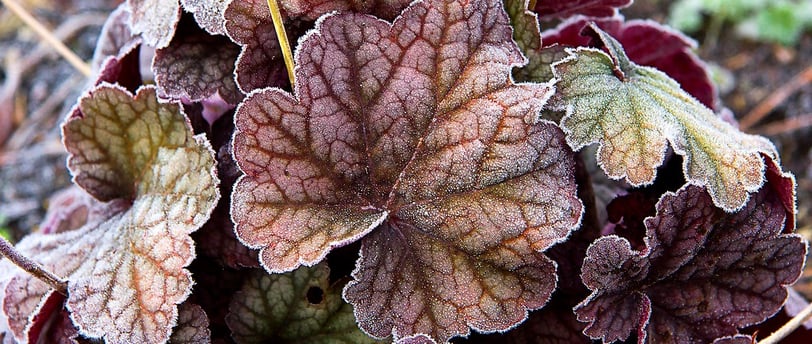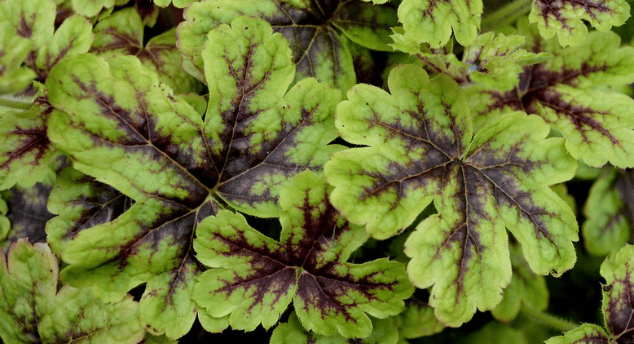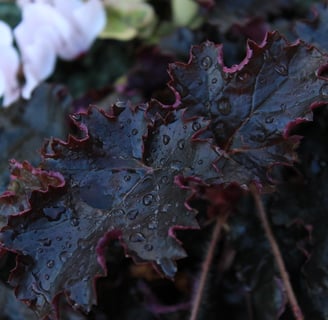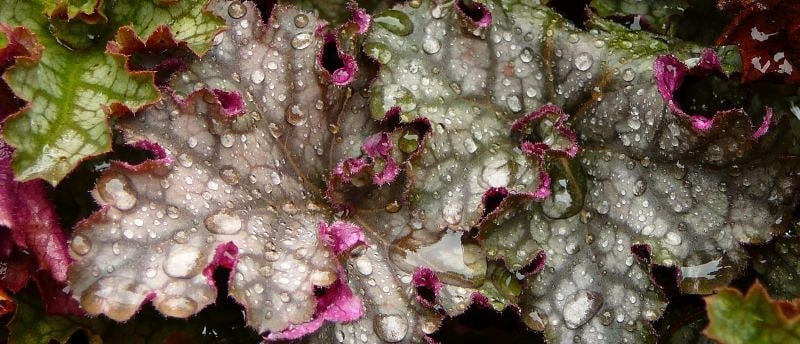The Curious Case of Heuchera: Why We Keep Losing (and Loving) This Shade Garden Favourite
Why do our Heucheras keep disappearing? This warm, practical guide explores the quirks of coral bells, from crown rot to frost heave, and shares tips to help them thrive. With stories from the shade, expert insights, and a bit of humour, it’s a comforting read for anyone who's ever watched a favourite plant quietly vanish.
PLANT PROFILES – SHADE PLANTS
Marcus Bergin
5/26/20254 min read
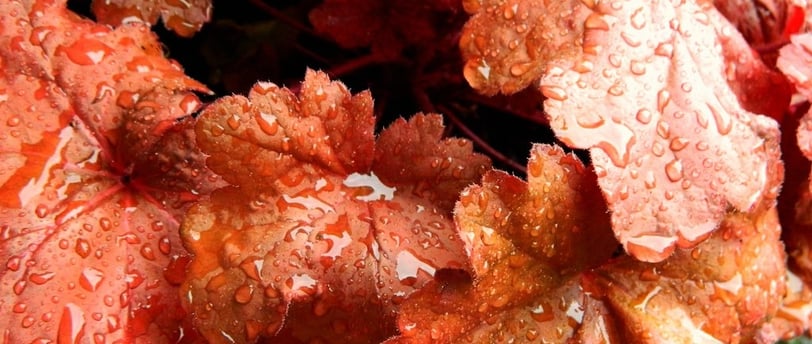

You know the story. You walk past a nursery bench and spot it—those ruffled leaves shimmering like burnished velvet. Plum, bronze, lime, marmalade. A whole painter’s palette in a single pot. You pick it up, smile at the name (‘Midnight Rose’ or ‘Georgia Peach’), and think, “That’ll brighten up the shade border.”
And for a while, it does.
Until it doesn’t.
Because sooner or later, in more gardens than we like to admit, Heuchera vanishes.
Why Does Heuchera Keep Disappearing?
You’re not alone. When we asked the Facebook group which plants just won’t stay put, Heuchera came up again and again. And while it may feel like a mystery, or even a personal failure, the truth is more comforting: Heuchera is just… a bit tricky.
Let’s unpack why.
1. Short Lifespan by Nature
Heuchera is technically a perennial, but not in the “plant-it-and-forget-it” sense. Most cultivars live around 3 to 5 years, and many need dividing or rejuvenating by year three.
They’re what I call “rolling perennials”, constantly shifting, fading, and needing attention. Not dead, just… transient.
2. The Crown Rot Conundrum
Here’s the big one: wet feet kill Heucheras.
Their central crowns sit right at the soil surface, and if water lingers too long, especially in winter, rot sets in fast. It's the same fungal trouble that affects lavenders and other shallow-rooted plants.
Fact: In trials by the Chicago Botanic Garden, Heucheras in poorly drained soil had nearly a 40% higher loss rate over three years compared to those grown in raised beds or amended soil.
3. Frost Heave Trouble
In colder climates, freeze-thaw cycles cause the crown to “heave” out of the soil, a phenomenon where the rootball lifts slightly each winter. Left exposed, the roots dry out or freeze, leading to a slow decline come spring.
A simple mulch in late autumn can help, but many gardeners skip this step, especially if Heuchera still looks good going into winter.
Getting Heuchera to Stick Around: What Actually Works?
If you’ve had a disappearing act or two, don’t despair. These tips might help you enjoy your coral bells for longer:
Start with the Right Soil
Free-draining is key.
Add grit or perlite if you’re in clay.
Raised beds or mounded soil make a big difference.
Avoid Deep Planting
Heuchera hates being buried.
Set the crown just above soil level and never mulch over the centre.
Divide Every 3 Years
You’ll often see the centre die out while outer leaves look fine.
That’s your cue: lift it, divide it, and replant the best bits like cuttings.
Think of it as giving your plant a new lease on life.
Mulch, but Wisely
Mulch in late autumn to prevent frost heave—but don’t pile it on the crown. A light layer of leaf mould or compost is ideal.
Watch for Vine Weevil
Their larvae adore Heuchera roots. If your plant collapses with no rot, gently tug it—if it lifts easily, check for grubs underneath.
Nematodes in spring and autumn are an effective organic solution.
The Joy of Trying Anyway
Here’s the thing I love about Heuchera: even after a few heartbreaks, we still go back. Because when they’re happy, they’re glorious.
‘Palace Purple’ in deep shade? A jewel.
‘Lime Marmalade’ under blue-flowered Brunnera? Glowing.
‘Obsidian’ in a pot with silver-leaved companions? Showstopper.
They’re unmatched for foliage contrast in the shade. And with over 75 named cultivars available commercially in the UK and US, you’re bound to find one that works in your garden, with your soil, and your seasons.
Parting Thoughts from the Shade
I sometimes think Heuchera teaches us patience. It’s not a plug-in-and-play perennial. It’s a reminder that the most beautiful things in the garden often come with caveats, and that’s part of their charm. So if yours has disappeared again this year, don’t be too hard on yourself. Try again. Try a new spot. Or maybe just lift and split what’s left and tuck it somewhere new. Who knows? It might just settle in this time.
And if it doesn’t, well, there’s always another variety calling your name at the garden centre.
Looking for real-world stories and advice?
Join over 300,000 gardeners in our Facebook Group, or listen to the latest episode of The Shade Gardening Podcast.
Happy gardening,
Marcus
